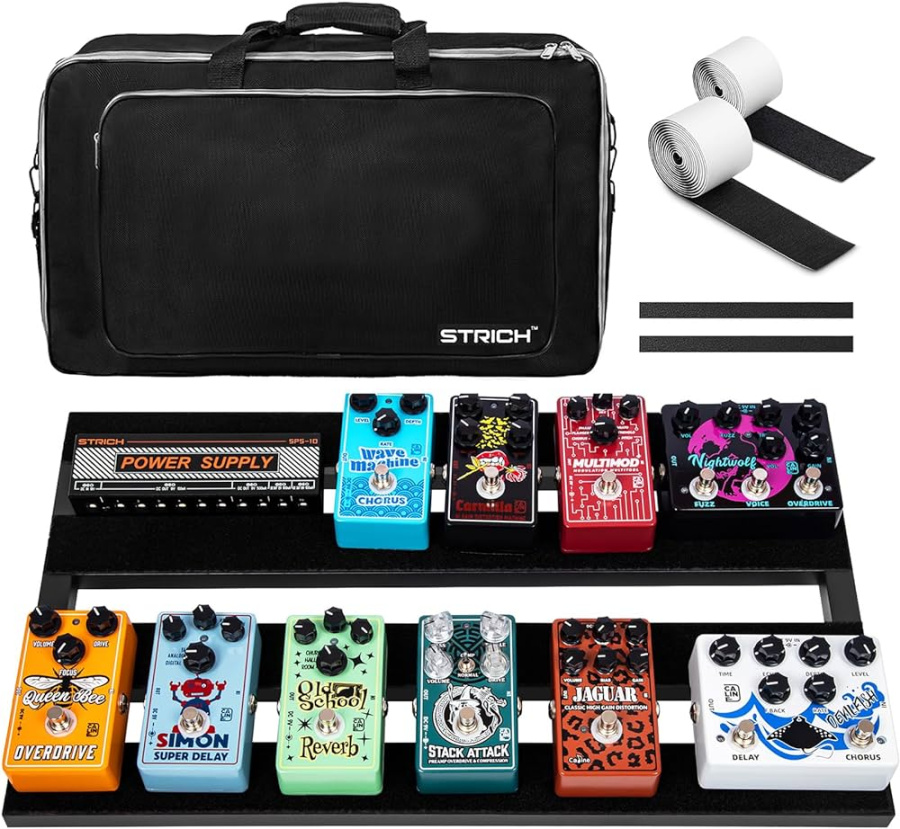—
Stomp On It: Diving Deep Into the World of Guitar Effects Pedals
So, you’ve got your guitar, your amp, and you’re ready to rock. But something’s missing, right? That extra something that makes your guitar sound like a spaceship, a roaring beast, or a shimmering dream. That’s where guitar effects pedals come in. These little boxes of sonic magic can transform your tone in ways you never thought possible. Let’s break down the world of stompboxes, shall we?
What Are Guitar Effects Pedals, Anyway?
Basically, a guitar effects pedal takes the signal from your guitar and modifies it before it hits your amp. Think of them as audio filters or processors. They can add anything from a subtle shimmer to a full-on sonic meltdown. There are tons of different types, each with its own unique character.
The Classic Crew: Essential Pedal Types

Let’s start with the basics. You’ll often find these on most guitarists’ pedalboards:
Overdrive and Distortion: The Heart of Rock
These are the workhorses. Overdrive pedals add a bit of grit and warmth, like pushing your amp a little harder. Distortion pedals crank things up, giving you that classic rock and metal crunch. Think of overdrive as a light seasoning and distortion as a full-on spice bomb.
Delay and Reverb: Creating Space
Delay pedals echo your notes, creating a sense of space and depth. Reverb simulates the sound of a room, making your guitar sound like it’s being played in a cathedral or a small club. They add a sense of atmosphere and can make your guitar sound huge.
Modulation: The Weird and Wonderful
This category includes pedals like chorus, flanger, and phaser. Chorus adds a shimmering, watery effect, flanger sounds like a jet plane swooshing by, and phaser creates a swirling, psychedelic vibe. These pedals are great for adding movement and texture to your sound.
Beyond the Basics: Exploring More Exotic Pedals
Once you’ve got the essentials down, you can start exploring some of the more niche and experimental pedals:
Wah Pedals: The Talking Guitar
These let you sweep through frequencies with your foot, creating that classic “wah-wah” sound. Think Jimi Hendrix or Kirk Hammett. They add a vocal-like quality to your playing.
Tremolo and Vibrato: The Wobbly Wonders
Tremolo pedals create a rhythmic volume change, while vibrato pedals create a pitch wobble. They add a vintage, retro vibe to your sound.
Octave Pedals: Doubling Down
These pedals add an octave above or below your original note, creating thick, layered sounds. They can make your guitar sound like a bass or a synth.
Fuzz Pedals: The Raw and Gritty
Fuzz pedals are the grandfathers of distortion, known for their thick, saturated, and often chaotic sound. Think vintage rock and garage punk. They can be wild and untamed.
Building Your Pedalboard: A Journey of Tone
Building a pedalboard is a personal journey. There’s no right or wrong way to do it. Experiment with different combinations and find what works for you. Start with the essentials and gradually add more pedals as you discover new sounds.
Power and Signal Flow: Keeping Things Running Smoothly
Remember, pedals need power, and the order in which you connect them matters. You’ll need a power supply and patch cables to keep everything running smoothly. The signal flow, or the order of pedals, can dramatically affect your tone. Experiment with different orders to see what sounds best. Some general rules of thumb are to put your wah first, followed by overdrive/distortion, then modulation, delay, and reverb. But, rules are meant to be broken.
Budget-Friendly Options: Getting Started Without Breaking the Bank
You don’t need to spend a fortune to get great tones. There are plenty of budget-friendly options available. Brands like Behringer, Donner, and Mooer offer affordable pedals that sound surprisingly good. Don’t be afraid to buy used pedals as well, you can often find great deals.
DIY Pedals: Building Your Own Tone
If you’re feeling adventurous, you can even build your own pedals. There are tons of DIY kits and resources available online. It’s a great way to learn about electronics and create unique sounds.
The Endless Pursuit of Tone
The world of guitar effects pedals is vast and ever-evolving. New pedals are constantly being released, pushing the boundaries of sonic exploration. Don’t be afraid to experiment, try new things, and find your own unique sound.
In conclusion, guitar effects pedals are an essential part of any guitarist’s arsenal. They offer a limitless palette of sonic possibilities, allowing you to shape your tone and create sounds that are uniquely yours. Whether you’re a beginner or a seasoned pro, there’s always something new to discover in the world of stompboxes. So, go out there, experiment, and find the pedals that speak to you. Happy stomping!

